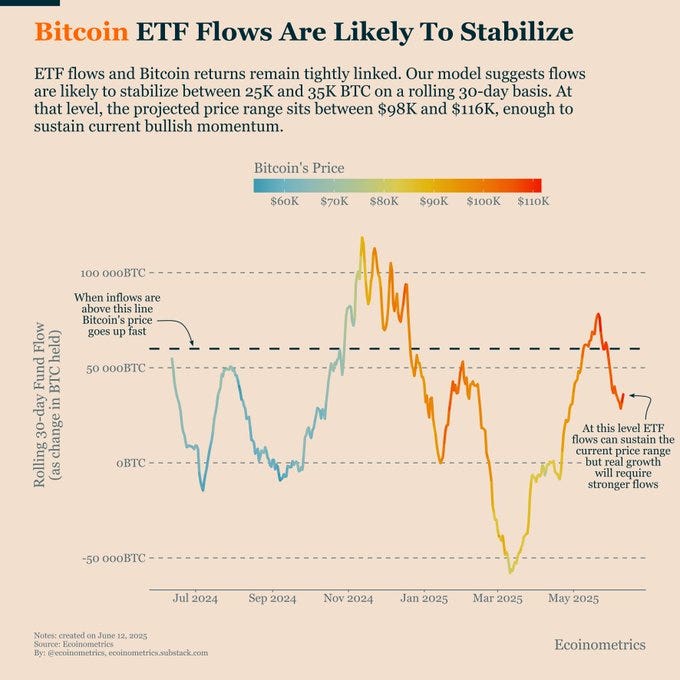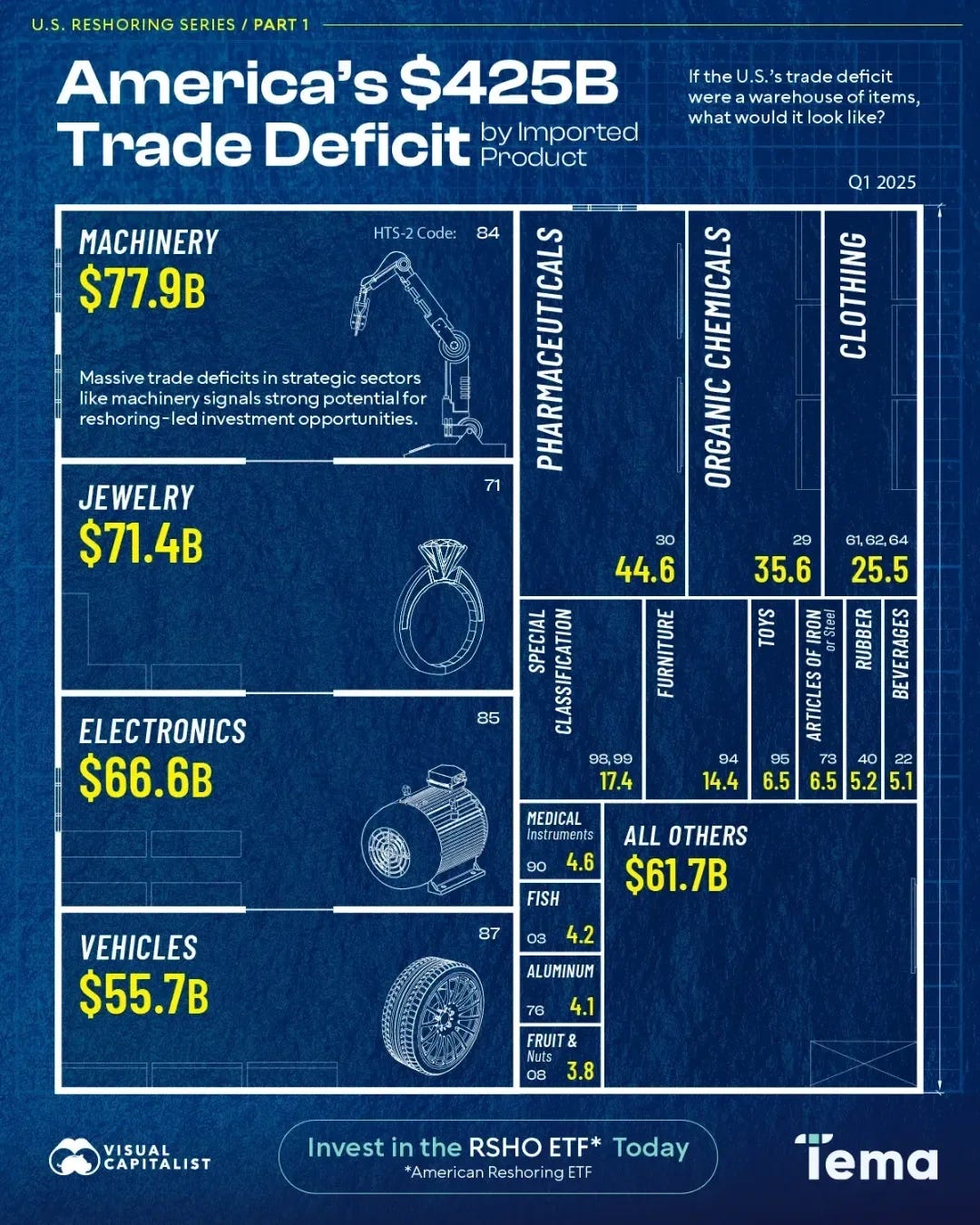Technicity Chronicle: Social Media Tips For Introverts
Data-driven insights across tech, finance, health, society and more
Welcome to Technicity Daily Chronicle! Your quick dive into the latest in tech, health, economy, sustainability, and more. Stay informed with bite-sized data insights on the trends shaping our world—fast, fresh, and to the point!
Current Bitcoin ETF Flows Hint at Price Stability
Bitcoin ETF flows appear to be heading towards a period of stabilization, according to a recent model. The chart demonstrates a tight correlation between 30-day fund flows and Bitcoin's price movements, with significant price surges occurring when inflows climb above 50,000 BTC. While current flows, hovering around 25K to 35K BTC on a rolling 30-day basis, are projected to sustain Bitcoin within a price range of $98K to $116K—enough to maintain existing bullish momentum—real, substantial growth would necessitate even stronger inflows.
Air Travel Safety: A Look at Accident Rates by Aircraft
The safety record of commercial passenger aircraft, measured by the rate of fatal hull loss accidents per million departures from 1959-2024, reveals a fascinating trend: newer aircraft types are significantly safer. Until 2025, several modern planes like the Airbus A330 NEO, A340, and Boeing 787 Dreamliner were part of "the zero club," having recorded no fatal hull loss accidents. Even newer models like the Embraer 170/175/190 and Airbus A320/321/319 family boast extremely low rates, below 0.1 per million departures. In stark contrast, older aircraft types no longer in service, such as the Boeing 707/720 and Douglas DC-8, show much higher rates, topping out at 3.04.
Amazon's eCommerce Dominance
Amazon maintains a commanding lead in the U.S. eCommerce landscape, attracting a massive 390 million monthly unique visitors to its website, dwarfing competitors like Walmart (166M) and eBay (106M). This dominance extends even further into the mobile realm, where Amazon's app boasts an impressive 255 million monthly active users, surpassing the combined total of the next four most popular apps: Walmart, Temu, Target, and eBay.
Lifestyle vs. Biology: What Kills Us at Different Ages
Our causes of death shift significantly as we age, with striking differences between those under and over 55. For individuals under 55, behavioral risks—such as poor diet, smoking, and lack of exercise—are the leading cause, contributing to a staggering 6.06 million deaths, or 51.68% of total fatalities in this age group. Metabolic risks, like high blood pressure or diabetes, also play a significant role. However, after age 55, metabolic risks become the dominant factor, accounting for a massive 24.71 million deaths (48.37%), highlighting the cumulative effect of long-term health issues.
Where America's Trade Deficit Hurts Most
As of Q1 2025, the U.S. faces a substantial $425 billion trade deficit driven by imported products, with several key sectors contributing disproportionately. Machinery alone accounts for a massive $77.9 billion, highlighting a critical area for potential reshoring investments. Jewelry imports add another significant $71.4 billion, followed closely by Electronics at $66.6 billion and Vehicles at $55.7 billion. The breakdown further reveals substantial deficits in Pharmaceuticals, Organic Chemicals, Clothing, and a wide array of "All Others."
Are Natural Disasters Really On the Rise?
While the raw number of recorded natural disaster events shows a dramatic increase since 1900, particularly in the latter half of the 20th century and into the 21st, it's crucial to understand the underlying factors. The surge isn't solely due to a greater frequency of events, but is also significantly influenced by improved data collection and expanded communication technologies, as highlighted by the establishment of CRED in 1973 and their comprehensive EM-DAT database from 2000 onwards. This means that while we are undoubtedly experiencing more climate-related challenges, part of the apparent rise reflects better tracking and reporting, rather than a purely increased number of disaster occurrences themselves.











